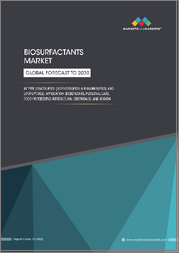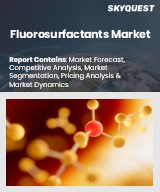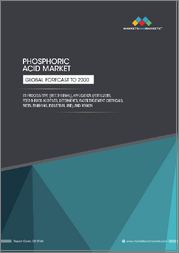
|
시장보고서
상품코드
1772407
미국의 세제용 알코올 시장 규모, 점유율, 동향 분석 리포트 : 원료별, 용도별, 부문 예측(2025-2030년)U.S. Detergent Alcohols Market Size, Share & Trends Analysis Report By Source (Natural, Synthetic), By Application (Laundry Detergents, Dishwashing Detergents, Personal Care & Cosmetics, Industrial Cleaners), And Segment Forecasts, 2025 - 2030 |
||||||
미국의 세제용 알코올 시장 동향 :
미국의 세제용 알코올 시장 규모는 2024년에 11억 5,000만 달러로 추정되며, 2025-2030년에 CAGR 5.2%로 성장할 것으로 예측됩니다.
이 시장의 주요 원동력은 지속가능한 바이오 세정 제품에 대한 소비자 수요 증가, 친환경 및 생분해성 계면활성제에 대한 규제 강화, 주거 및 산업 부문 전반의 위생에 대한 인식이 높아짐에 따른 것입니다. 제조업체들은 그린 케미스트리의 노력에 따라 EPA Safer Choice 및 USDA BioPreferred와 같은 엄격한 라벨링 기준을 충족하기 위해 천연 유래 세제용 알코올 사용을 우선시하고 있습니다. 세탁 및 식기 세척 분야에서 농축 및 고성능 포뮬러로의 전환은 퍼스널케어 및 화장품 분야의 성장과 함께 전체 밸류체인에서 천연 및 합성 세제 알코올의 소비를 가속화하고 있습니다.
홈케어, 퍼스널케어, 시설 청소 등 다양한 분야에서 식물 유래 성분과 생분해성 성분의 사용이 증가함에 따라 이 시장은 큰 성장 기회를 맞이하고 있습니다. 클린 라벨 및 환경 인증 제품에 대한 소비자 선호도가 높아지면서 RSPO 인증 및 유전자 변형이 없는 천연 알코올을 제공하는 제조업체들에게 새로운 길을 열어주고 있습니다. 또한 친환경 화학 및 순환 경제에 대한 관심이 확대되면서 효소 및 발효 공정을 포함한 바이오 알코올 생산 기술의 혁신이 촉진되고 있습니다. 석유화학 제조업체와 주요 FMCG 기업과의 전략적 파트너십은 특히 프리미엄 및 성능 지향적 포뮬러에 대한 장기적인 수요 가시성을 창출할 것으로 예측됩니다.
유망한 성장 전망에도 불구하고 시장은 기후, 지정학, 공급망 요인에 따라 달라지는 원료 가격 변동, 특히 팜유와 야자유에서 추출한 천연 세제용 알코올과 같은 원료 가격 변동과 같은 두드러진 문제에 직면해 있습니다. 또한 지속가능성 주장에 대한 규제 감시가 강화되고, 투명하고 추적 가능한 조달이 요구되고 있습니다. 합성세제용 알코올 생산업체들은 석유화학제품에서 추출한 원료가 환경에 민감한 소비자들의 반발에 직면하면서 이산화탄소 배출량을 줄여야 한다는 압력에 직면해 있습니다.
목차
제1장 조사 방법과 범위
제2장 개요
제3장 미국의 세제용 알코올 시장 변수, 동향, 범위
- 시장의 계통/부수 시장 전망
- 업계 밸류체인 분석
- 판매채널 분석
- 규제 프레임워크
- 애널리스트의 시점
- 규제와 기준
- 시장 역학
- 시장 성장 촉진요인 분석
- 시장 성장 억제요인 분석
- 업계의 기회
- 업계의 과제
- 비즈니스 환경 툴 분석 : 미국의 세제용 알코올 시장
- Porter's Five Forces 분석
- PESTLE 분석
제4장 미국의 세제용 알코올 시장 : 용도별 추정·동향 분석
- 주요 포인트
- 용도별 변동 분석과 시장 점유율, 2024년과 2030년
- 용도별 세계의 미국 세제용 알코올 시장, 2018-2030년
- 세탁 세제
- 식기용 세제
- 퍼스널케어 & 화장품
- 산업용 클리너
- 기타 애플리케이션
제5장 미국의 세제용 알코올 시장 : 원료별 추정·동향 분석
- 주요 포인트
- 원료별 변동 분석과 시장 점유율, 2024년과 2030년
- 원료별 세계의 미국 세제용 알코올 시장, 2018-2030년
- 천연
- 합성
제6장 경쟁 구도
- 주요 기업, 최근 동향, 업계에 대한 영향
- 경쟁의 분류
- 기업의 시장 현황 분석
- 기업 히트맵 분석
- 전략 지도제작, 2024년
- 기업 리스트
- Stepan Company
- Kraton Corporation
- Procter &Gamble
- Vantage Specialty Chemicals, Inc.
- Colonial Chemical
- Pilot Chemical Company
- Oleon NV
- Essential Labs
- Rita Corporation
U.S. Detergent Alcohols Market Trends:
The U.S. detergent alcohols market size was estimated at USD 1.15 billion in 2024 and is projected to grow at a CAGR of 5.2% from 2025 to 2030. The market is primarily driven by rising consumer demand for sustainable and bio-based cleaning products, regulatory push toward environmentally friendly and biodegradable surfactants, and increasing hygiene awareness across residential and industrial sectors. Manufacturers are prioritizing the use of naturally derived detergent alcohols to align with green chemistry initiatives and meet stringent labeling standards such as the EPA Safer Choice and the USDA BioPreferred. The shift toward concentrated and high-performance formulations in laundry and dishwashing segments, coupled with growth in personal care and cosmetic applications, is accelerating the consumption of both natural and synthetic detergent alcohols across the value chains.
The market presents strong growth opportunities driven by the rising adoption of plant-based and biodegradable ingredients across home care, personal care, and institutional cleaning applications. Increasing consumer preference for clean-label and eco-certified products is opening new avenues for manufacturers offering RSPO-certified and non-GMO natural alcohols. Moreover, the expansion of green chemistry and circular economy initiatives is encouraging innovation in bio-based alcohol production technologies, including enzymatic and fermentation processes. Strategic partnerships between oleochemical producers and major FMCG companies are also expected to create long-term demand visibility, particularly in premium and performance-oriented formulations.
Despite promising growth prospects, the market faces notable challenges such as feedstock price volatility, especially for natural detergent alcohols derived from palm and coconut oils, which are influenced by climatic, geopolitical, and supply chain factors. The market also contends with increasing regulatory scrutiny around sustainability claims, requiring transparent and traceable sourcing practices. Synthetic detergent alcohol producers face pressure to reduce their carbon footprint, as petrochemical-derived ingredients face pushbacks from environmentally conscious consumers.
U.S. Detergent Alcohols Market Report Segmentation
This report forecasts revenue growth at the country level and provides an analysis of the latest industry trends in each of the sub-segments from 2018 to 2030. For this study, Grand View Research has segmented the U.S. detergent alcohols market report based on application, and source.
- Application Outlook (Revenue, USD Million, 2018 - 2030)
- Laundry Detergents
- Dishwashing Detergents
- Personal Care & Cosmetics
- Industrial Cleaners
- Other Applications
- Source Outlook (Revenue, USD Million, 2018 - 2030)
- Natural
- Synthetic
Table of Contents
Chapter 1. Methodology and Scope
- 1.1. Research Methodology
- 1.2. Research Scope & Assumption
- 1.3. Information Procurement
- 1.3.1. Purchased Database
- 1.3.2. GVR's Internal Database
- 1.3.3. Secondary Sources & Third-Party Perspectives
- 1.3.4. Primary Research
- 1.4. Information Analysis
- 1.4.1. Data Analysis Models
- 1.5. Market Formulation & Data Visualization
- 1.6. List of Data Sources
Chapter 2. Executive Summary
- 2.1. Market Outlook, 2024 (USD Million) (Kilotons)
- 2.2. Segmental Outlook
- 2.3. Competitive Insights
Chapter 3. US Detergent Alcohols Market Variables, Trends & Scope
- 3.1. Market Lineage/Ancillary Market Outlook
- 3.2. Industry Value Chain Analysis
- 3.2.1. Sales Channel Analysis
- 3.3. Regulatory Framework
- 3.3.1. Analyst Perspective
- 3.3.2. Regulations & Standards
- 3.4. Market Dynamics
- 3.4.1. Market Driver Analysis
- 3.4.2. Market Restraint Analysis
- 3.4.3. Industry Opportunities
- 3.4.4. Industry Challenges
- 3.5. Business Environmental Tools Analysis: US Detergent Alcohols Market
- 3.5.1. Porter's Five Forces Analysis
- 3.5.1.1. Bargaining Power of Suppliers
- 3.5.1.2. Bargaining Power of Buyers
- 3.5.1.3. Threat of Substitution
- 3.5.1.4. Threat of New Entrants
- 3.5.1.5. Competitive Rivalry
- 3.5.2. PESTLE Analysis
- 3.5.2.1. Political Landscape
- 3.5.2.2. Economic Landscape
- 3.5.2.3. Social Landscape
- 3.5.2.4. Technology Landscape
- 3.5.2.5. Environmental Landscape
- 3.5.2.6. Legal Landscape
- 3.5.1. Porter's Five Forces Analysis
Chapter 4. US Detergent Alcohols Market: Application Estimates & Trend Analysis
- 4.1. Key Takeaways
- 4.2. Application Movement Analysis & Market Share, 2024 & 2030
- 4.3. Global US Detergent Alcohols Market By Application, 2018 - 2030 (USD Million) (Kilotons)
- 4.4. Laundry Detergents
- 4.4.1. US Detergent Alcohols Market Estimates And Forecasts, for Laundry Detergents, 2018 - 2030 (USD Million)
- 4.5. Dishwashing Detergents
- 4.5.1. US Detergent Alcohols Market Estimates And Forecasts, for Dishwashing Detergents, 2018 - 2030 (USD Million)
- 4.6. Personal Care & Cosmetics
- 4.6.1. US Detergent Alcohols Market Estimates And Forecasts, for Personal Care & Cosmetics, 2018 - 2030 (USD Million)
- 4.7. Industrial Cleaners
- 4.7.1. US Detergent Alcohols Market Estimates And Forecasts, for Industrial Cleaners, 2018 - 2030 (USD Million) (Kilotons)
- 4.8. Other Applications
- 4.8.1. US Detergent Alcohols Market Estimates And Forecasts, for Other Applications, 2018 - 2030 (USD Million) (Kilotons)
Chapter 5. US Detergent Alcohols Market: Source Estimates & Trend Analysis
- 5.1. Key Takeaways
- 5.2. Source Movement Analysis & Market Share, 2024 & 2030
- 5.3. Global US Detergent Alcohols Market By Source, 2018 - 2030 (USD Million) (Kilotons)
- 5.4. Natural
- 5.4.1. US Detergent Alcohols Market Estimates And Forecasts, for Natural, 2018 - 2030 (USD Million)
- 5.5. Synthetic
- 5.5.1. US Detergent Alcohols Market Estimates And Forecasts, for Synthetic, 2018 - 2030 (USD Million)
Chapter 6. Competitive Landscape
- 6.1. Key Players, their Recent Developments, and their Impact on Industry
- 6.2. Competition Categorization
- 6.3. Company Market Position Analysis
- 6.4. Company Heat Map Analysis
- 6.5. Strategy Mapping, 2024
- 6.6. Company Listing
- 6.6.1. Stepan Company
- 6.6.1.1. Company Overview
- 6.6.1.2. Financial Performance
- 6.6.1.3. Product Type Benchmarking
- 6.6.1.4. Strategic Initiatives
- 6.6.2. Kraton Corporation
- 6.6.2.1. Company Overview
- 6.6.2.2. Financial Performance
- 6.6.2.3. Product Type Benchmarking
- 6.6.2.4. Strategic Initiatives
- 6.6.3. Procter & Gamble
- 6.6.3.1. Company Overview
- 6.6.3.2. Financial Performance
- 6.6.3.3. Product Type Benchmarking
- 6.6.3.4. Strategic Initiatives
- 6.6.4. Vantage Specialty Chemicals, Inc.
- 6.6.4.1. Company Overview
- 6.6.4.2. Financial Performance
- 6.6.4.3. Product Type Benchmarking
- 6.6.4.4. Strategic Initiatives
- 6.6.5. Colonial Chemical
- 6.6.5.1. Company Overview
- 6.6.5.2. Financial Performance
- 6.6.5.3. Product Type Benchmarking
- 6.6.5.4. Strategic Initiatives
- 6.6.6. Pilot Chemical Company
- 6.6.6.1. Company Overview
- 6.6.6.2. Financial Performance
- 6.6.6.3. Product Type Benchmarking
- 6.6.6.4. Strategic Initiatives
- 6.6.7. Oleon NV
- 6.6.7.1. Company Overview
- 6.6.7.2. Financial Performance
- 6.6.7.3. Product Type Benchmarking
- 6.6.7.4. Strategic Initiatives
- 6.6.8. Essential Labs
- 6.6.8.1. Company Overview
- 6.6.8.2. Financial Performance
- 6.6.8.3. Product Type Benchmarking
- 6.6.8.4. Strategic Initiatives
- 6.6.9. Rita Corporation
- 6.6.9.1. Company Overview
- 6.6.9.2. Financial Performance
- 6.6.9.3. Product Type Benchmarking
- 6.6.9.4. Strategic Initiatives
- 6.6.1. Stepan Company
(주말 및 공휴일 제외)


















